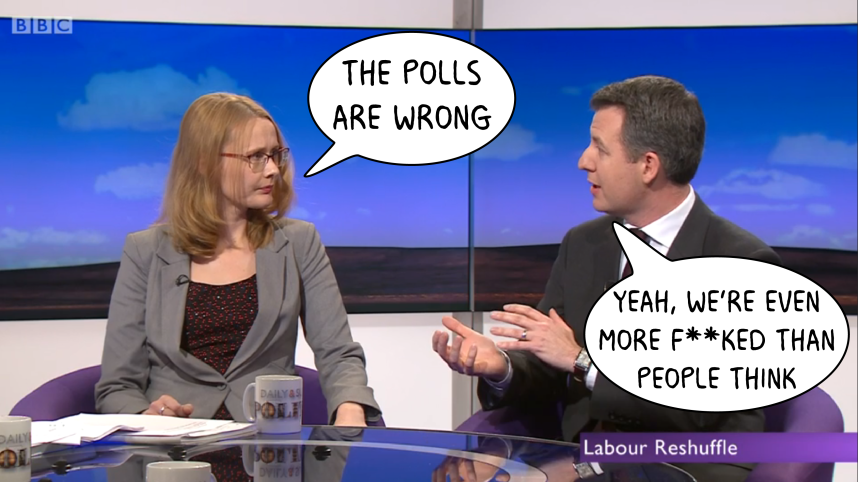In defence of polling and why Labour really is doing terribly
Critic: “Labour’s doing terribly in the polls, isn’t it?”
Corbynista: “Look how badly wrong the polls got the last election – you can’t rely on polls.”
This is the stock reply of the loyal Jeremy Corbyn follower whenever someone points out that Labour is doing abysmally in the polls. This week’s Daily Politics saw one of Jeremy Corbyn’s biggest critics – Chris Leslie – square off with one of Corbyn’s true believers – Cat Smith – who used the exact defence above.
The fact that polling companies did not accurately predict the outcome of the 2015 election is now being used by Corbynistas to justify burying their heads in the sand. It’s true that polling companies weren’t entirely accurate – they never are. They are, however, a good deal better than political instinct, “what I’m hearing on the doorstep”, or “a feeling in my water”. Polls may not be perfect, but they’re not nothing – and they’re better than any other measure of political success, save for actual votes.
Polls can usually identify when one party has a commanding lead over another. Labour’s political dominance in the years following the 1992 election therefore made predicting the winner of an election a fairly easy exercise. In the run up to 2015 the narrative that the two main parties were neck-and-neck was borne out by the polls – with the polling average for both parties from the start of April through to election day being exactly the same: 33.6%. As it transpired, the polls were doing what they almost always do and overstating Labour and understating the Conservatives.
So the Corbyistas are right – the polls are probably wrong. The trouble for Labour is that the polls are very seldom wrong against Labour. Since 1959, Labour has only ever been understated in election polls twice: in February 1974 by 0.7%; and in 2010 by 1.6% (which could, in part, be explained by the ‘Cleggmania’ phenomenon).
From 1992-2010, the average error (that is to say, the average difference between Labour and the Conservatives election-polling average and the actual result) is 2.6%. In 2015, that error was 3.3% – above average, but still lower than the 3.6% error in 2001 or the 4.7% error in 1992. Excluding the 2010 election, the average error is 3.1% – which places the 2015 polls well within the range of normal. In the past six general elections, election polls have, on average, understated the Conservatives by 2.1% and overstated Labour by 3.1%. The standard deviation in both the Conservative and Labour figures (the error in the error, if you like) is 1.8% and 2.7% respectively – which is quite low. In other words, though the polls are usually wrong, they’re usually quite consistently wrong. Save for 2010 – where the polls understated Labour by 1.6% – the polls in the run up to all other elections polls have overstated Labour by at least 2%.
So Cat Smith is right – the polls probably are wrong. But what she and the Corbynistas seem to forget is that they’re far more likely to be overstating Labour than understating. Labour’s 7.5% polling deficit in the polls probably isn’t right – but the true deficit is a lot more likely to be 12.5% than 2.5%.


